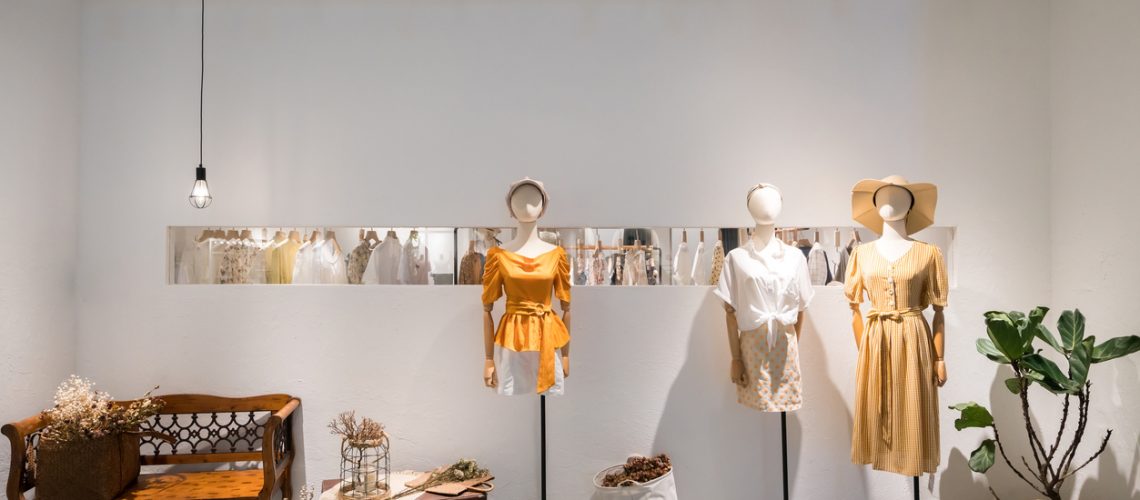How to Style Your Outfits with Boutique Fashion Finds
How to Style Your Outfits with Boutique Fashion Finds
Blog Article
Sustainable Fashion: Exactly How Eco-Friendly Clothing Is Forming the Future of Design
As the fashion business encounters increasing analysis over its environmental influence, the increase of lasting style supplies an encouraging choice that lines up design with ecological obligation. Utilizing innovative products such as plant-based textiles and recycled fibers, alongside advanced approaches like digital and 3D printing, developers are redefining what it suggests to be stylish in the contemporary age. Simultaneously, the expanding appeal of upcycling and second hand society is fostering a change in the direction of a round economic climate. Exactly how does this activity truly influence the future trajectory of fashion, and what challenges lie ahead in its extensive fostering?
Cutting-edge Lasting Products
As the style sector grapples with its environmental influence, ingenious lasting products have actually arised as an important option for decreasing environmental footprints. These products not only decrease dependence on fossil fuels however likewise minimize unsafe pesticide use and water consumption.
In enhancement to plant-based products, developments in biofabrication have resulted in the development of lab-grown textiles. Mycelium leather, derived from mushroom origins, presents a biodegradable and functional option to pet natural leather. Its production results in significantly lower carbon emissions and water use, making it a more lasting option for stylist seeking to align with eco-friendly methods.
Recycled products are additionally gaining grip, with polyester made from recycled plastic bottles representing a substantial advancement. This advancement not only draws away plastic waste from oceans and garbage dumps but additionally minimizes power intake contrasted to producing virgin polyester. Together, these products highlight the potential for a more lasting fashion business, leading the way for ecologically mindful layout and production.
Eco-Conscious Production
Building on the technologies in lasting products, the garment industry is likewise re-evaluating its manufacturing processes to better decrease ecological impact. Secret approaches consist of decreasing water consumption, reducing carbon discharges, and eliminating dangerous chemicals. By adopting closed-loop systems, producers intend to reuse water and energy successfully, considerably diminishing waste. The combination of sustainable energy sources, such as solar and wind power, into production centers further stops reliance on fossil fuels.
One more crucial aspect is the reduction of poisonous chemicals typically used in coloring and completing textiles. Eco-conscious suppliers are changing in the direction of plant-based dyes and waterless dyeing innovations, which not just safeguard regional ecological communities yet likewise enhance worker safety. Technologies like digital printing minimize material waste and energy consumption, providing a cleaner alternative to standard approaches.
In addition, openness and traceability have ended up being vital. With the advancement of blockchain technology, business can currently supply in-depth understandings into their supply chains, making sure ethical and eco pleasant methods at each action. This transparency develops customer trust and motivates brand names to keep high sustainability criteria. As the demand for eco-conscious products grows, producers are obliged to introduce, ensuring that the future of fashion is both trendy and sustainable.
The Rise of Upcycling
Upcycling, a transformative method in lasting style, entails artistically repurposing thrown out products into brand-new, top notch products. This innovative strategy not only decreases waste however additionally decreases the demand for basic materials, thereby lessening the ecological influence of clothing manufacturing. By reimagining and reconstructing existing items, designers and style brands are able to instill originality right into their collections while promoting environmental responsibility.

Moreover, the upcycling activity has actually empowered small businesses and independent developers, that often lead in technology due to their dexterity and creative thinking. By maximizing the abundant availability of unused materials, these entities add click for info to a round economic situation, showing that style can be both elegant and lasting. Via upcycling, the sector takes considerable strides towards an extra responsible and mindful future.
Thrift Culture's Effect
The blossoming thrift culture significantly improves the landscape of lasting style, stressing the significance of mindful usage. This social change encourages consumers to accept pre-owned garments, therefore minimizing the need for new garment manufacturing and reducing ecological effect. Thrift purchasing not only extends the lifecycle of garments however additionally decreases the carbon footprint connected with manufacturing, transferring, and dealing with apparel.
A crucial facet of thrift society is its democratization of fashion. By using a large selection of styles from various ages at affordable costs, thrift shops make fashion easily accessible to a wider target market. This access promotes a sense of individuality and creative thinking, as consumers mix and suit unique items to curate individualized wardrobes without adding to the quick fashion cycle.
Additionally, thrift society advertises circularity in vogue, lining up with the principles of a round economic situation. By recirculating garments, the cycle of waste is interrupted, and sources are saved. This practice sustains a shift from a direct "take-make-dispose" version to a much more sustainable structure. As even more developers and consumers browse around these guys accept second hand culture, the fashion business is compelled to adjust, integrating lasting methods to fulfill the expanding need for eco-conscious choices.

Future Trends in vogue
Style's advancement is increasingly shaped by sustainability-driven campaigns and technical advancements. As consumers come to be much more ecologically mindful, the market is reacting with groundbreaking improvements that redefine the future of design. One noticeable pattern is the surge of digital fashion, where digital garments can be used in enhanced truth atmospheres, considerably lowering fabric waste. This change not just accommodates the digital-savvy consumer however additionally minimizes the ecological footprint typically linked with garment production.
In addition, the combination of blockchain modern technology supplies new possibilities in transparency and traceability, permitting customers to confirm the sustainability qualifications of their apparel. boutique fashion. This makes certain liability in supply chains and advertises honest sourcing methods. 3D printing is yet one more development that assures to transform making procedures by enabling on-demand manufacturing, therefore reducing excess stock and waste
In addition, the advancement of bio-fabricated materials, such as lab-grown natural leather and plant-based textiles, provides lasting choices to typical products. These advancements minimize reliance on pet products and resource-intensive plants. As these modern technologies grow, they are poised to change the fashion landscape, merging style with sustainability. The future of style, as a result, lies in a smooth mix of innovation, innovation, and eco-friendly duty.
Final Thought
The transformation of the style market via sustainable techniques suggests an essential change in the direction of ecological accountability. This evolution not just aligns fashion with eco-friendly sustainability however additionally sets a precedent for future fads focused on responsibility and technology.
As the fashion sector deals with enhancing analysis over its environmental impact, the increase of sustainable style supplies an encouraging choice that straightens design with eco-friendly duty.As the style sector grapples with its ecological impact, innovative sustainable products have actually arised as a vital service for reducing eco-friendly impacts. Together, these products underscore the see this capacity for a more lasting fashion sector, paving the method for environmentally mindful style and manufacturing.
Structure on the innovations in sustainable materials, the style market is additionally re-evaluating its manufacturing procedures to even more lower ecological effect. boutique fashion.Upcycling, a transformative technique in lasting fashion, entails creatively repurposing disposed of materials into brand-new, premium products
Report this page